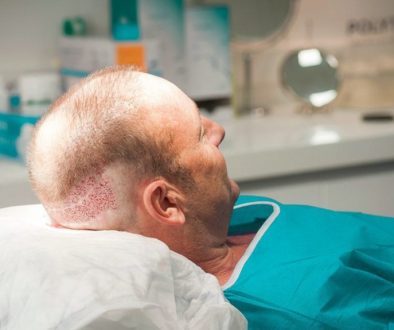Diffuse Thinning Hair, Diffuse Unpatterned Alopecia (DUPA), and Hair Transplants
Those of with diffuse thinning hair often wonder if it is worth having a hair transplant procedure done considering the risk of permanant shock loss and the chance of a zero sum gain. What is the percentage of this type of thing happening? I welcome all opinions.
This question was posed by a hair loss sufferer on our hair restoration forum and answered by Dr. Michael Beehner of Saratoga Springs, NY who is one of our recommended hair restoration physicians. His professional answer is below.
 The term, “diffuse thinner,” can refer to two different types of hair loss patients. One group – and the more common one referred to this way – is the man with homogenous thinning hair throughout the typical male pattern baldness area on top (horseshoe-shaped), in whom there is some degree of miniaturization going on with some of the follicles/hairs, allowing someone to see the scalp through the hair.
The term, “diffuse thinner,” can refer to two different types of hair loss patients. One group – and the more common one referred to this way – is the man with homogenous thinning hair throughout the typical male pattern baldness area on top (horseshoe-shaped), in whom there is some degree of miniaturization going on with some of the follicles/hairs, allowing someone to see the scalp through the hair.
The second group are those who have the acronym diagnosis, DUPA – which stands for “diffuse unpatterned alopecia. These men, though usually much thinner on top, also have diffuse miniaturization throughout the donor area also. Many of these men present for hair restoration surgery in their 20’s and it is difficult to tell them they are NOT candidates for hair transplantation. If you look around in a crowd of older men, you can spot some of these. They have hardly any hair on their head anywhere. It is a somewhat rare diagnosis fortunately. The reasons for not transplanting them are twofold: One, the donor hair is of uncertain quality and will not last that many years in all likelihood. Second, because the sides and back are thinner, a donor scar would easily be seen and would draw attention to itself. Basically, a hair transplant surgeon is raising false hopes and stealing the patient’s money in such situations.
With the more commonly described “diffuse thinning” patient, in whom there is an equal degree of hair loss throughout the top, the patient certainly should be told that he will eventually lose all the hair contained within that area, unless he is in his 50’s or 60’s at the time of examination. Even hair loss treatment solutions, such as Propecia (finasteride) and Rogaine (minoxidil), will not prevent it from eventually being lost. It may delay that day by 10 years though. If they are transplanted, the advantage for the patient is that the hairs that remain on top help serve as camouflage while the patient is recuperating and healing those first couple of weeks and makes the whole process more undetectable. It certainly is possible that some of those more vulnerable, miniaturized hairs will be “shocked” and possibly lost forever; but it’s a minor point, since only 4-5 months later the new transplanted hair will be gradually growing and dominating the area on top.
Above is a photo of a young DUPA patient, confirmed with 30x power magnification exam of the scalp showing a significant percentage of miniaturized hairs.
Mike Beehner, M.D.
—
Bill Seemiller
Associate Publisher
Technorati Tags: thinning hair, hair transplant, hair loss, male pattern baldness, DUPA, diffuse unpatterned alopecia, hair restoration, hair transplantation, donor hair, hair transplant surgeon, diffuse thinning, hair loss treatment, Propecia, finasteride, Rogaine, minoxidil, miniaturized hairs, transplanted hair



